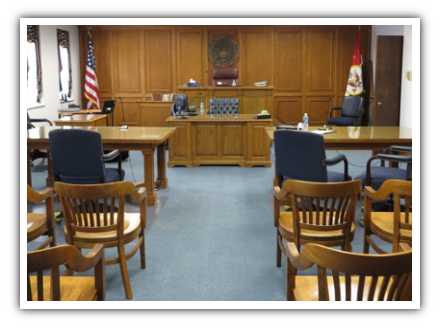In previous blogs, we examined two strategies for fitting a courtroom into an existing space that is too small to meet design standards: flexible furniture and fixtures in the courtroom and limiting user capacity. The third strategy, recommended only if the previous two strategies will not provide adequate space, is limiting the courtroom functions and activities that occur in the courtroom. It is challenging when faced with limited space.
If available space is limited, an undersized courtroom that can handle selected, more minor proceedings may be the only construction option. While this may not be an ideal arrangement, many courthouses throughout the country have such courtrooms. Some jurisdictions even prefer to have courtrooms designed for specific types of proceedings (e.g., different-sized courtrooms for criminal, civil, and juvenile proceedings).
Courtroom Functions Restricted by Space
When space is limited, the courtroom functions become limited. For example, if there is insufficient room in the thriving area to construct a full jury box for criminal proceedings, constructing a smaller jury box may enable the courtroom to be used for civil proceedings. If the space is too limited to build a jury box, the courtroom functions could be limited to proceedings that do not require a jury. The photo presents a courtroom in Georgia where the narrow width precluded a jury box and limited the use of the courtroom to preliminary proceedings.
The photo presents a courtroom in Georgia where the narrow width precluded a jury box and limited the use of the courtroom to preliminary proceedings.
Though the layout may need improvement or be more functional for many proceedings, undersized courtrooms can be used constructively. The most undersized courtroom I have seen featured a judge’s bench, two small tables for counsel, and two rows of spectator seating. While the design standard for courtrooms in this jurisdiction was 1,700 sq.ft., this courtroom was approximately 300 sq. ft. However, it was the only space available in a detention facility for a judge to conduct proceedings with detainees. It was not ideal, but – despite the small space – it served a vital purpose. The space was used multiple times a week, preventing the need (and expense) to transport many detainees outside the detention facility for preliminary hearings.
Every courtroom, regardless of size, can have a purpose.

















